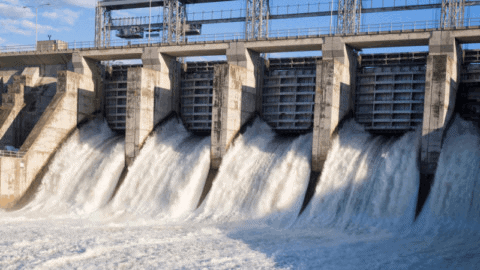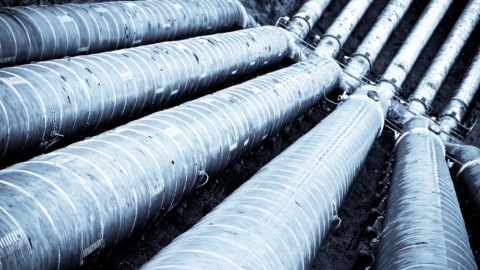Screens are an essential addition to water intake and diversion systems to conserve fish populations whilst protecting water management infrastructure.
Traditionally, placing a screen on your pump intake meant:

Installing a fine screen (This method delivers unreliable flow volumes, with regular screen blockages that are difficult to clean).

Installing a coarse screen (This often delivers poor quality water, causing blocked lines and screens, resulting in high pump maintenance).
OR
Both these outcomes are undesirable, inefficient and costly.
Selecting an efficient pump intake screen
An efficient pump intake screen provides: finer filtration, a low approach velocity and an integrated screen cleaning system.
These proven features deliver uninterrupted flows (with no need for back flushing), prevents clogging of spray nozzles and requires minimal maintenance, all whilst reducing power consumption and operating costs.
The environment also benefits, as innovative screen technology protects aquatic fauna and flora in waterway and catchments.
Efficient screens feature:
- Integrated brush cleaning system
- Internal baffling to control even flow over full screen area
- Aperture size <3mm
- Approach velocity of <0.12m/s
- Screen life of 25+ years Australian made
- Deliver full rated unobstructed pump flows
Design considerations
There are three main design considerations when selecting a quality fit-for-purpose screen:
- Aperture size
Intake screens are available in a variety of aperture sizes. The size required is site specific based on the quantity of water, characteristics of debris, and weed and aquatic life present (including fish species and breeding patterns). - Approach velocity
The velocity of the water approaching and passing through the screen should be as low as possible. This prevents entrainment and impingement of both debris and fish. Low approach velocities also reduce head loss. - Self-cleaning functionality
Traditional pump intake screens require regular manual cleaning with significant operational and safety risks. Advances in intake screen technologies include innovative cleaning systems. A self-cleaning screen ensures efficient operation, with fish protection, without comprising flow. Additionally, a sustainably clean screen improves pump efficiency.
Sustainable solution
AWMA screens are designed to suit gravity and piped, pump intake structures. They draw low flow velocities, distributed evenly across the screen to ensure the sustainability of fish health and efficiency of water extraction.
This even flow distribution across the entire screen surface combined with controlled low approach velocities prevents debris entrainment and impingement on the screen. This is complimented by energy efficient, automated, brush cleaning.
Screen solutions are custom designed to be site specific to ensure the rated flow demand of the pump or diversion is maintained.
AWMA screens provide a win-win for the operator with reduced costs whilst protecting the environment with the preservation of aquatic life.
Make sure your next screen decision is based on the inclusion of the key elements: aperture size, controlled approach velocities and an integrated cleaning system.


Before (left) and after (right): Coarse pump intake screen replaced with AWMA Self-Cleaning Intake Screen.
This partner content is brought to you by AWMA Water Control. For more information, visit www.awmawatercontrol.com.au.

















